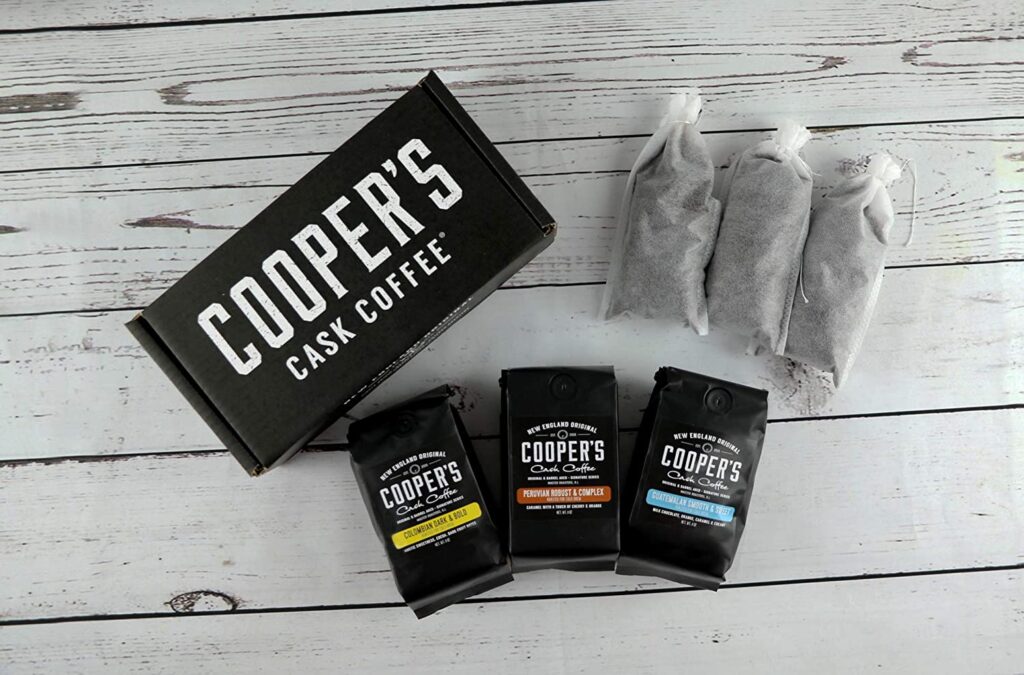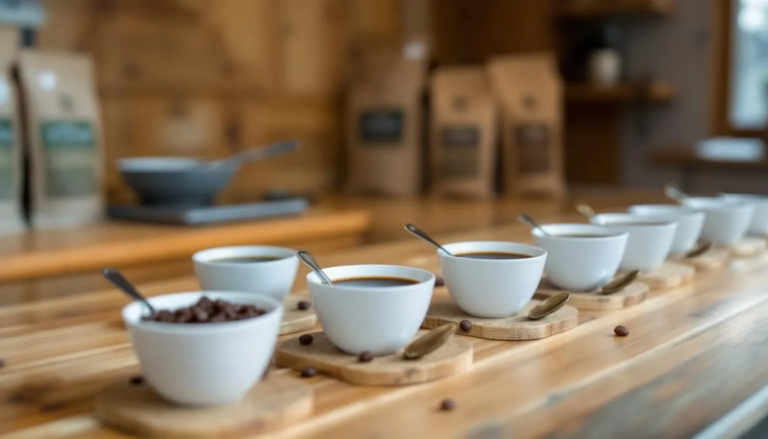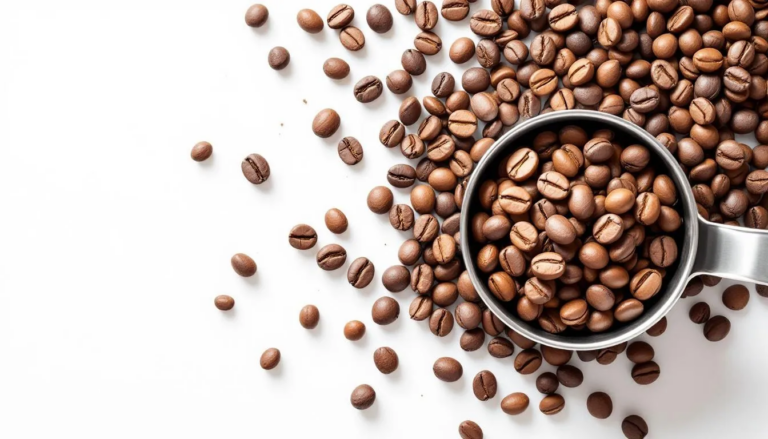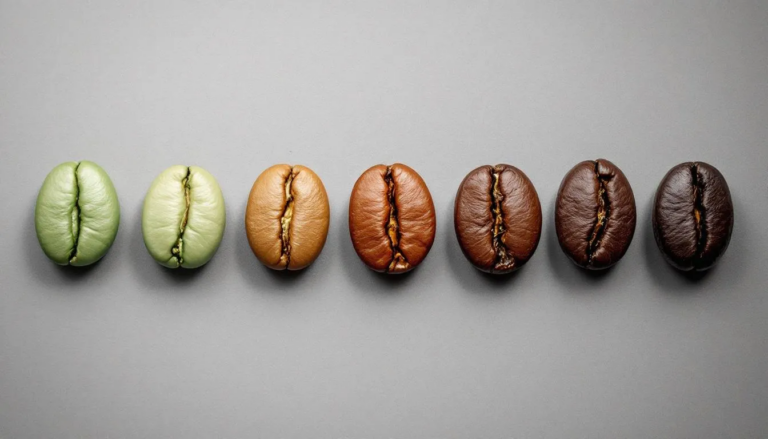Does cold brew have more caffeine than hot coffee? Generally, yes. Because caffeine is in cold brew is steeped longer, it extracts more caffeine. This article explains the details behind cold brew’s caffeine content and compares it to other coffee types.
Key Takeaways
- Cold brew coffee has the potential to pack a serious caffeine punch, with a 16-ounce cup containing around 200-300 mg of caffeine – quite the kick, especially for sleepyheads!
- Long steeping times and the coffee-to-water ratio are the secret sauce (or, should I say, ‘brew’?) for achieving that optimal caffeine extraction – longer equals stronger, but don’t confuse smooth with sloppy!
- While cold brew generally has more caffeine than hot coffee, don’t be shocked! It’s all about those low-temperatures, coarser grinds, and patience – making your cold brew the wise tortoise in the caffeine race.
Understanding Cold Brew Coffee
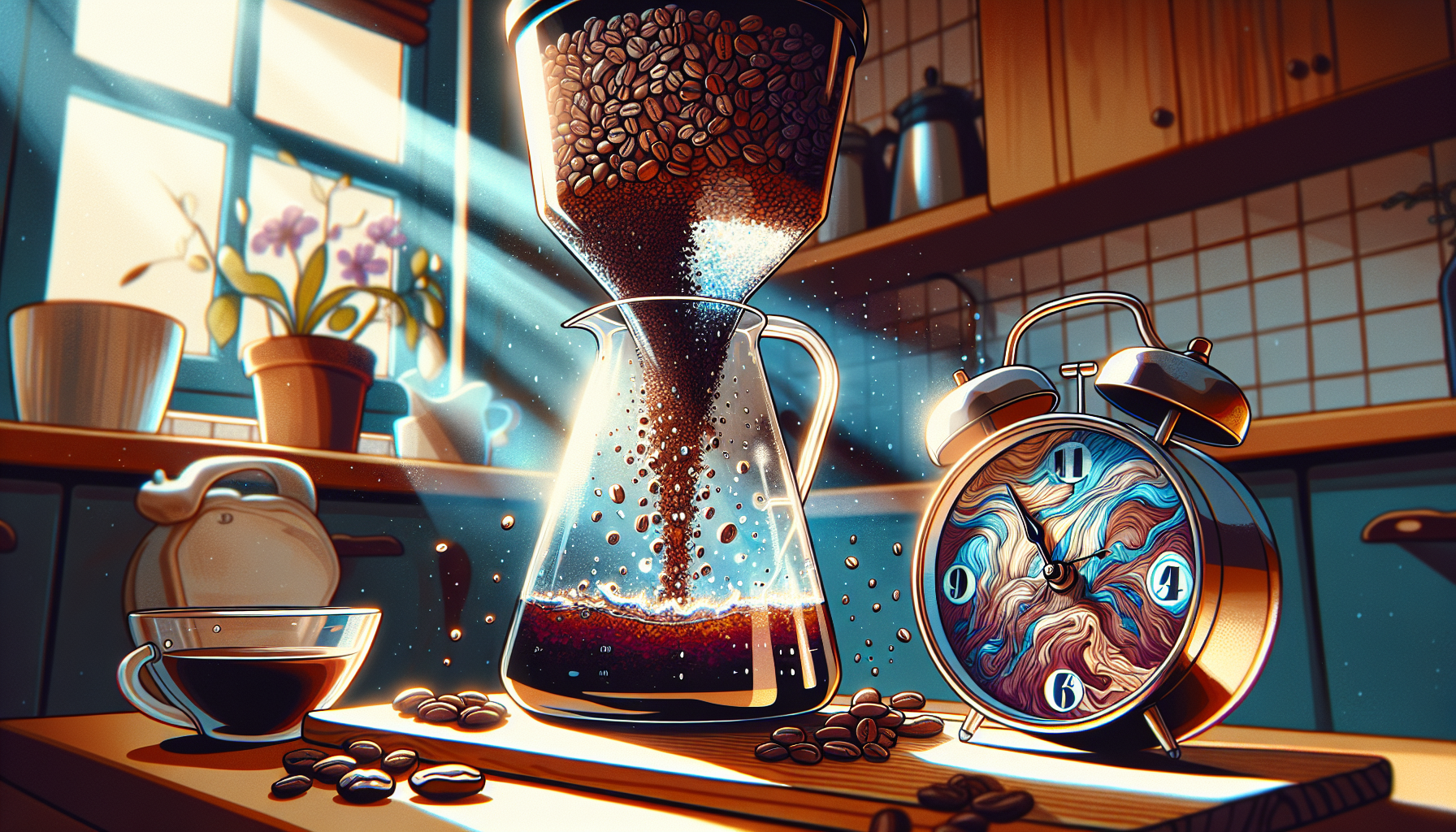
Cold brew coffee is not just a trend; it’s a revolution in the world of caffeine. This delightful drink is particularly popular during the hot summer months when the idea of sipping a steaming cup of hot coffee makes you sweat just thinking about it. Many people also enjoy cold coffee drinks to beat the heat.
Unlike traditional hot coffee, cold brew is made by steeping coarsely ground cold brewed coffee in cold water for an extended period, resulting in a smooth, less acidic beverage that’s perfect for those who prefer minimal bitterness and a hint of nuttiness.
The Cold Brew Method
Making cold brew coffee is an art and a science. The cold brew method requires coarsely ground coffee beans to be steeped in cold or room temperature water. This process typically lasts between 8 to 24 hours. This long steeping time allows for optimal caffeine extraction and a rich, smooth flavor. Typically, the coffee to water ratio recommended is eight parts water to one part coffee, striking a perfect balance between strength and taste.
Using finer coffee grounds can increase surface area more coffee beans, enhancing caffeine extraction but also risking over-extraction and bitterness. This is why steeping ground coffee beans coarsely ground coffee beans are preferred for cold brewing.
For the best results making hot coffee, patience is key. Letting the coffee grounds steep in cold water overnight – or up to 24 hours for the truly dedicated – allows the flavors to develop fully. This method makes cold brew distinct from other coffee drinks, offering a unique taste experience that keeps coffee aficionados coming back for more.
Flavor Profile
Cold brew coffee is celebrated for its smooth and less acidic flavor profile more ground coffee. Thanks to the extended brewing process, cold brew coffee significantly reduces the acidity level that is often found in hot brewed coffee. This results in a drink that is not only easier on the stomach but also offers a more nuanced taste experience with subtle nutty undertones.
In addition to being less acidic, cold brew tends to have mild chocolate flavors, enhancing its overall smoothness and making it a delightful choice for those who prefer their coffee with minimal bitterness. The absence of bitter notes allows the natural flavors of the coffee beans to shine through, making cold brew a favorite among those who enjoy a well-rounded, flavorful cup of coffee.
Caffeine Content in Cold Brew
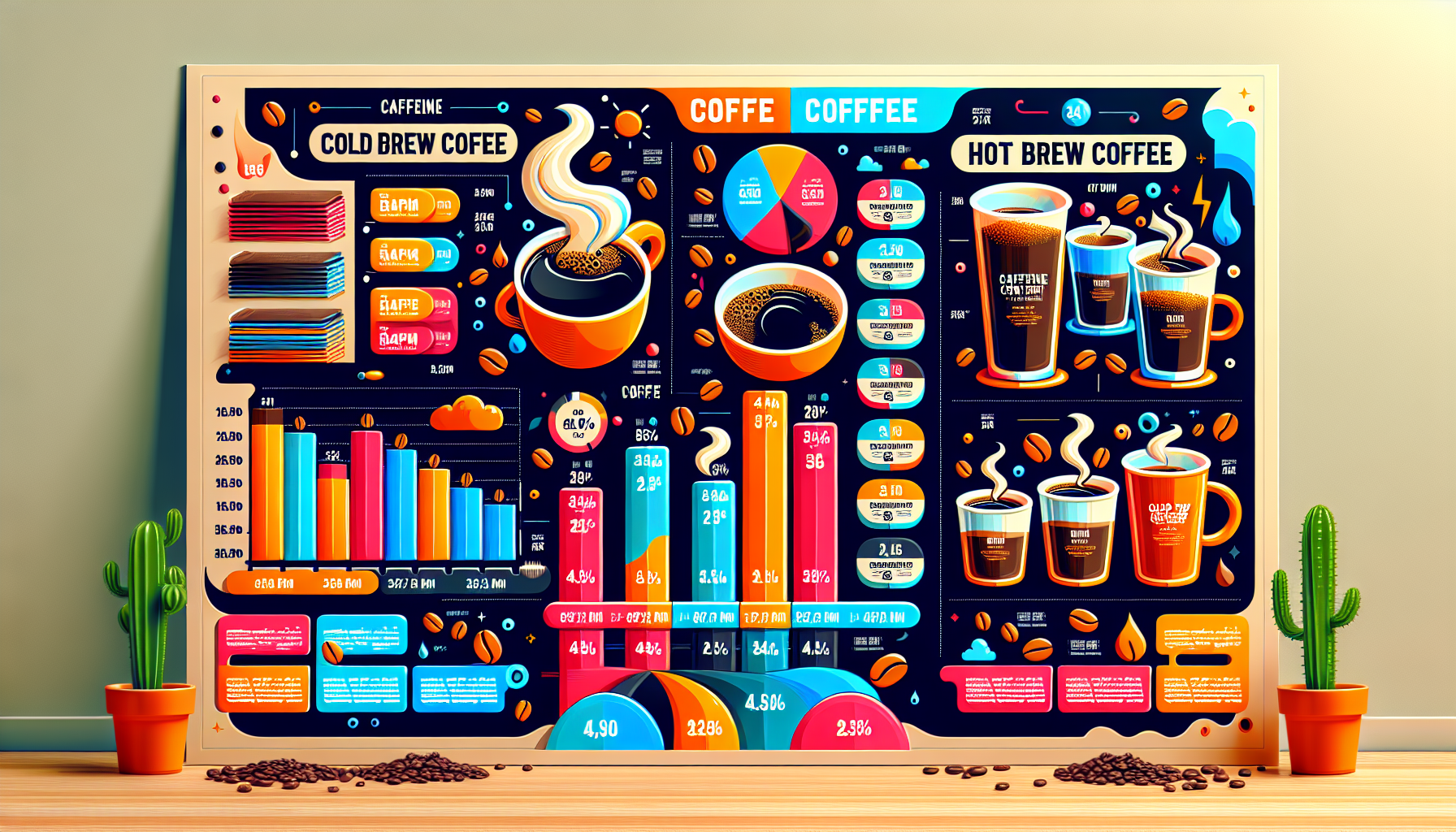
Now, let’s get to the heart of the matter: the caffeine content in cold brew coffee. A 16-ounce cup of cold brew coffee typically contains about 200 mg of caffeine. This amount can vary slightly based on the brewing method. This higher caffeine concentration is due to the longer steeping times which allow for more caffeine to be extracted from the coffee grounds.
Cold brew often contains almost twice the caffeine of a grande espresso, making it a potent option for those needing a strong caffeine kick to start their day. Even compared to iced coffee, which generally contains between 150 to 180 mg of caffeine, cold brew packs a more significant punch.
Coffee to Water Ratio
The coffee to water ratio is a critical factor that influences the caffeine content in cold brew coffee. A common brewing ratio for cold brew ranges from 1 part coffee to 4 to 8 parts water, depending on how strong you want your brew. For those who like their coffee strong and potent, a 4:1 ratio is typically recommended and involves steeping the coffee grounds in water for a minimum of 12 hours. This allows for a rich flavor and high caffeine extraction, making it perfect for those who need that extra caffeine boost.
However, if you prefer a milder cup, you can adjust the ratio to 1:8, which will still provide a smooth, flavorful coffee but with a lower caffeine concentration.
The quantity of coffee beans used in the brewing process significantly affects the final caffeine content. Remember, the coffee to water ratio directly impacts the amount of caffeine you extraction, so tweaking this ratio is a powerful way to control your cold brew’s strength and caffeine punch.
Steeping Time
Steeping time is another crucial factor that determines the caffeine content in cold brew coffee. The longer the coffee grounds are in contact with water, the more caffeine is extracted. For instance, those made by steeping coffee for 18 to 20 hours can result in significantly higher caffeine levels compared to shorter durations. Some adventurous coffee lovers even let their cold brew steep for up to 48 hours, creating an incredibly strong and caffeinated beverage.
A traditional cold brew recipe usually involves steeping coarsely ground coffee in cold water for 12 to 24 hours to achieve a balanced caffeine level and smooth flavor. This extended period allows the coffee to develop its characteristic mellow taste while extracting enough caffeine to give you that needed jolt.
Real-Life Examples
To give you a better idea of how much caffeine you’re dealing with, let’s look at some real-life examples. A typical cup of regular cold brew coffee has caffeine content ranging from 240 to 280 milligrams. This amount can vary based on the brewing method and coffee beans used. Nitro cold brew, which is infused with nitrogen gas to create a creamy texture, usually contains between 200 to 300 milligrams of caffeine per 16 ounces and can go up to 400 milligrams in larger servings.
Larger serving sizes naturally lead to higher total caffeine intake due to the increased volume. Industry standards for total dissolved solids in cold brews have decreased over time, which can affect the caffeine concentration, but it still remains a highly caffeinated beverage compared to many other coffee types.
Comparing Cold Brew to Hot Brewed Coffee
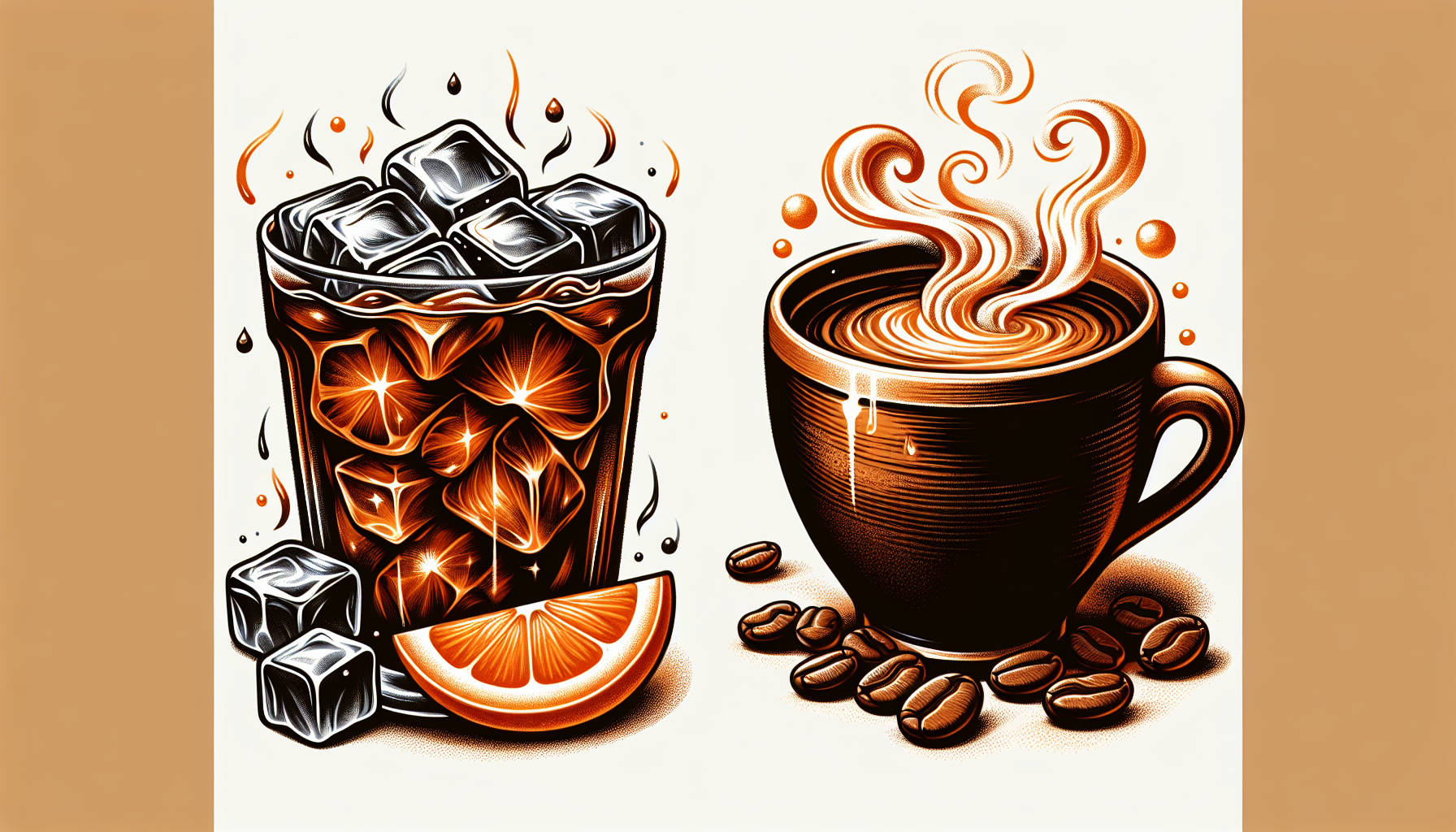
When comparing cold brew iced coffee to hot brewed coffee, one of the first things you’ll notice is the difference in caffeine concentration. Cold brew typically has a higher caffeine concentration than regular brewed coffee, making it a favorite for those needing an extra kick. For instance, a 16-ounce iced coffee contains around 165 mg of caffeine, while the same size of cold brew generally has over 200 mg.
This is partly due to the brewing method and water temperature, which play crucial roles in determining caffeine extraction.
Hot Brew Methods
Hot brewing methods vary widely and include popular methods such as drip coffee makers, a French press, presses, and espresso machines. Each of these methods offers a different flavor profile, influencing the overall coffee experience. For example, a French press coffee tends to be richer and more robust, while drip coffee is smoother and lighter.
Knowing these hot brew methods helps when comparing caffeine content with the other brewing methods and options like cold brew. Each method provides a unique way to extract caffeine and flavors from the coffee beans, offering various options for consumers who enjoy experimenting with their coffee.
Caffeine Extraction Differences
One of the key differences between cold brew and hot brewed coffee is how caffeine is extracted. More caffeine is extracted when coffee is brewed with hot water, as the heat helps dissolve the caffeine more efficiently. This means that hot brewed coffee can sometimes have higher caffeine levels in a shorter brewing time compared to cold brew methods.
However, cold brew methods generally lead to lower caffeine extraction due to the absence of heat, though the longer steeping times can compensate for this, often resulting in a higher overall caffeine content. This difference in caffeine extraction is a crucial factor to consider when choosing between a hot or cold brew.
Typical Caffeine Levels
To give you a clearer picture, let’s look at the typical caffeine levels in both cold brew and hot brewed coffee. A large cold brew coffee from popular chains can contain upwards of 300 mg of caffeine, depending on the size and brew method. In a 12-ounce cup, the caffeine content can range from 109 mg to 285 mg, with a standard serving containing around 207 mg of caffeine.
In comparison, a standard cup of hot coffee averages around 144 mg of caffeine. While cold brew can have higher caffeine levels than hot brewed coffee, the exact amount can vary depending on numerous factors, including the brewing method and the coffee to water ratio used.
Factors Influencing Caffeine Content
Several factors influence the caffeine content in your coffee, whether it’s cold brew or hot brewed. The concentration of dissolved solids in cold brew significantly determines its caffeine content. High caffeine content can sometimes lead to symptoms of over-caffeination, such as jitters and headaches.
Additionally, flavored cold brews, such as salted caramel or honey almond, can have variations in caffeine content depending on the type and amount of flavoring used.
Coffee Beans and Roast Level
The type of coffee beans and their roast level play crucial roles in determining caffeine content. Robusta beans typically contain higher caffeine levels compared to Arabica beans, with Robusta containing nearly twice as much caffeine. This makes the choice of beans a significant factor in the overall caffeine content of your brew.
Interestingly, the roasting process does not diminish caffeine levels. Whether you prefer a light, medium, or dark roast, the caffeine content remains consistent across all roast profiles. However, higher roasting temperatures can result in lower levels of chlorogenic acids and higher caffeine concentrations, adding another layer of complexity to your coffee’s flavor and kick.
Grind Size and Brewing Time
Grind size and brewing time are also crucial factors in determining the caffeine content of cold brew coffee. The caffeine concentration is primarily influenced by the ratio of coffee to water used during brewing. A higher coffee to water ratio can lead to increased caffeine extraction per volume, making your brew stronger.
The grind size matters too. Coarsely ground coffee beans, when steeped for a longer time, can produce a well-balanced cold brew with optimal caffeine levels. Conversely, a finer grind can lead to over-extraction and a bitter taste, which is why it’s essential to get the grind size just right.
Serving Size and Concentration
Serving size and concentration play a significant role in how much caffeine you end up consuming. A typical serving size of cold brew coffee, such as a 16-ounce cup, can contain varying caffeine levels, often exceeding 240 mg. Cold brew concentrate, when not diluted, has a significantly higher caffeine content compared to regular cold brew.
Using cold brew concentrate increases your caffeine intake, so it’s advisable to start with small portions, especially if you’re sensitive to caffeine. Cold brew is often brewed in large quantities, which can lead to higher caffeine consumption if not managed properly.
Managing Caffeine Intake with Cold Brew
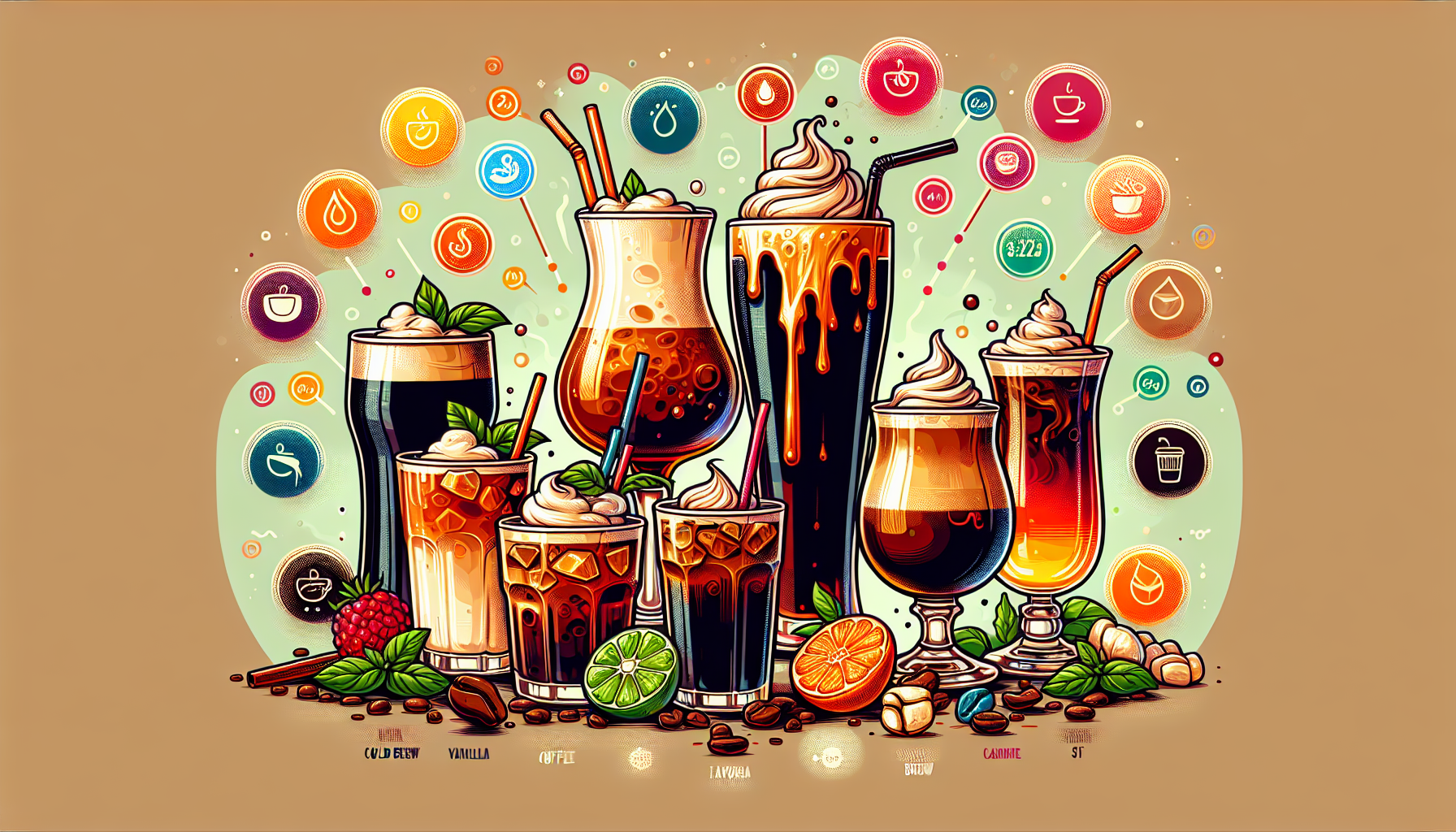
Managing your caffeine intake from cold brew coffee is essential, as it can be quite strong if consumed without adjustments. Cold brew can be very potent, but its strength can be managed by adjusting the dilution, serving it in various recipes, or even choosing decaf options.
Decaf and Half Caf Options
Opting for decaffeinated coffee for your cold brew can significantly lower your caffeine intake without sacrificing flavor. Decaf options are perfect for those who crave the taste of cold brew but want to avoid the jitters that come with high caffeine levels. Some cold brew concentrates also offer various caffeine levels, including decaf options that contain almost no caffeine.
Utilizing decaffeinated or half-caffeinated coffee beans can also help you enjoy your favorite cold brew flavors while reducing your overall caffeine consumption. This way, you can savor your drink without worrying about the potential side effects of too much caffeine.
Adjusting Brew Ratios
Altering the ratio of coffee to water during brewing is another effective way to control the overall caffeine concentration in your cold brew. By adjusting this ratio, you can make your brew stronger or milder depending on your preference. For example, a common ratio for cold brew is 1 ounce of coffee per 1 cup of water, which can be tweaked for the desired strength.
This flexibility lets you experiment with different strengths and find the perfect balance that suits your taste buds and caffeine tolerance. Whether you prefer a robust, high-caffeine brew or a lighter, more refreshing cup, adjusting the brew ratios gives you the control you need.
Dilution Techniques
Diluting cold brew concentrate with water or milk is a simple yet effective method to reduce its caffeine strength. This technique is commonly used to make the final beverage much less caffeine potent, allowing you to enjoy the rich flavors of cold brew without the overwhelming caffeine hit.
Simply mix your cold brew concentrate with an equal part of water or milk to reduce the caffeine content. This not only mellows out the caffeine levels but also adds a creamy texture to your drink, making it a delightful option for those who prefer a less intense coffee experience.
Popular Cold Brew Recipes
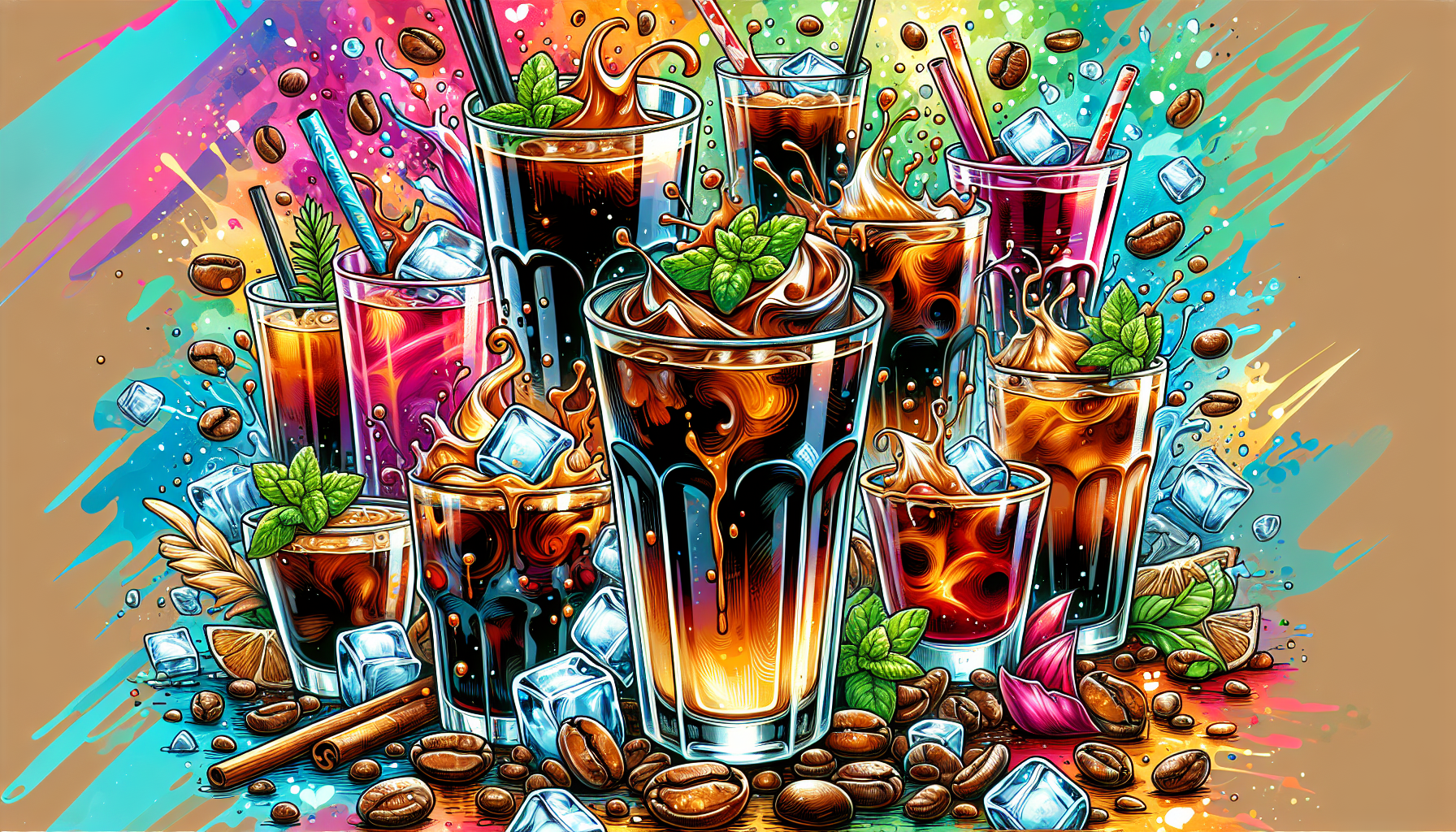
Cold brew coffee is incredibly versatile and can be used in a variety of recipes, from classic cold brews to creative flavored concoctions. This adaptability makes it a favorite among coffee lovers who enjoy experimenting with different flavors and ingredients.
Classic Cold Brew
The classic cold brew recipe is a staple for any coffee enthusiast. It involves steeping coffee grounds in cold water for 8 to 24 hours, resulting in a less acidic and smoother drink compared to hot brewed coffee. This method brings out the natural flavors of the coffee beans, offering a refreshing and flavorful beverage.
Typically, the coffee grounds are steeped in cold water for 18 to 24 hours to achieve a rich, balanced flavor profile. Once the steeping is complete, the coffee is filtered to remove the grounds, leaving you with a smooth, delicious cold brew that can be enjoyed on its own or with your favorite additions.
Nitro Cold Brew
Nitro cold brew is a trendy variation that takes your cold brew to the next level. This type of cold brew is infused with nitrogen gas, creating a creamy texture and often a higher caffeine content compared to regular cold brew. The infusion process gives the coffee a smooth, velvety mouthfeel, making it a luxurious treat for coffee lovers.
The nitrogen bubbles not only enhance the texture but also amplify the flavor, providing a richer and more robust coffee experience. Nitro cold brew is typically served straight from the tap, offering a unique and refreshing way to enjoy your caffeine fix.
Flavored Cold Brews
Flavored cold brews are gaining popularity due to their unique taste and refreshing qualities. Popular varieties include vanilla, caramel, mocha, and seasonal spices like pumpkin spice, allowing you to enjoy your cold brew with an added twist.
These flavored cold brews can vary in caffeine levels based on the type of flavoring and additional ingredients used. Many consumers choose flavored cold brews not only for their taste but also considering their caffeine preferences, making it a versatile option for coffee enthusiasts.
Summary
In conclusion, cold brew coffee offers a unique and flavorful way to enjoy your caffeine. Its higher caffeine concentration, smooth taste, and versatility all make cold brew it a popular choice among coffee lovers. By understanding the factors that influence caffeine content – from the coffee to water ratio and steeping time to the type of coffee beans and brewing methods – you can tailor your cold brew to suit your preferences.
Whether you prefer a strong, bold brew or a milder, more refreshing drink, cold brew coffee provides endless possibilities. So go ahead, experiment with different recipes, adjust your brew ratios, and enjoy the delightful world of cold brew coffee.
Frequently Asked Questions
How much caffeine is in cold brew coffee?
Cold brew coffee packs a punch with about 200 mg of caffeine in a 16-ounce cup, but remember, it’s not a magic potion—your recipe or brew method could spice things up! So, take that sip wisely, my fellow caffeine aficionados!
What is the best coffee to water ratio for cold brew?
For cold brew, aim for a coffee to water ratio of 1:4 to 1:8. Just remember, if you go too weak, you might as well be sipping flavored water!
Can I make decaf cold brew coffee?
Of course you can! Just grab some decaf beans, and you’ll have yourself a cold brew that won’t send you bouncing off the walls—perfect for those who want to chill without the jitters!
How can I reduce the caffeine content in my cold brew?
To keep your cold brew from giving you the jitters, just water it down like you’re trying to stretch a penny! A splash of water or milk will save your sanity and your sleep schedule.
